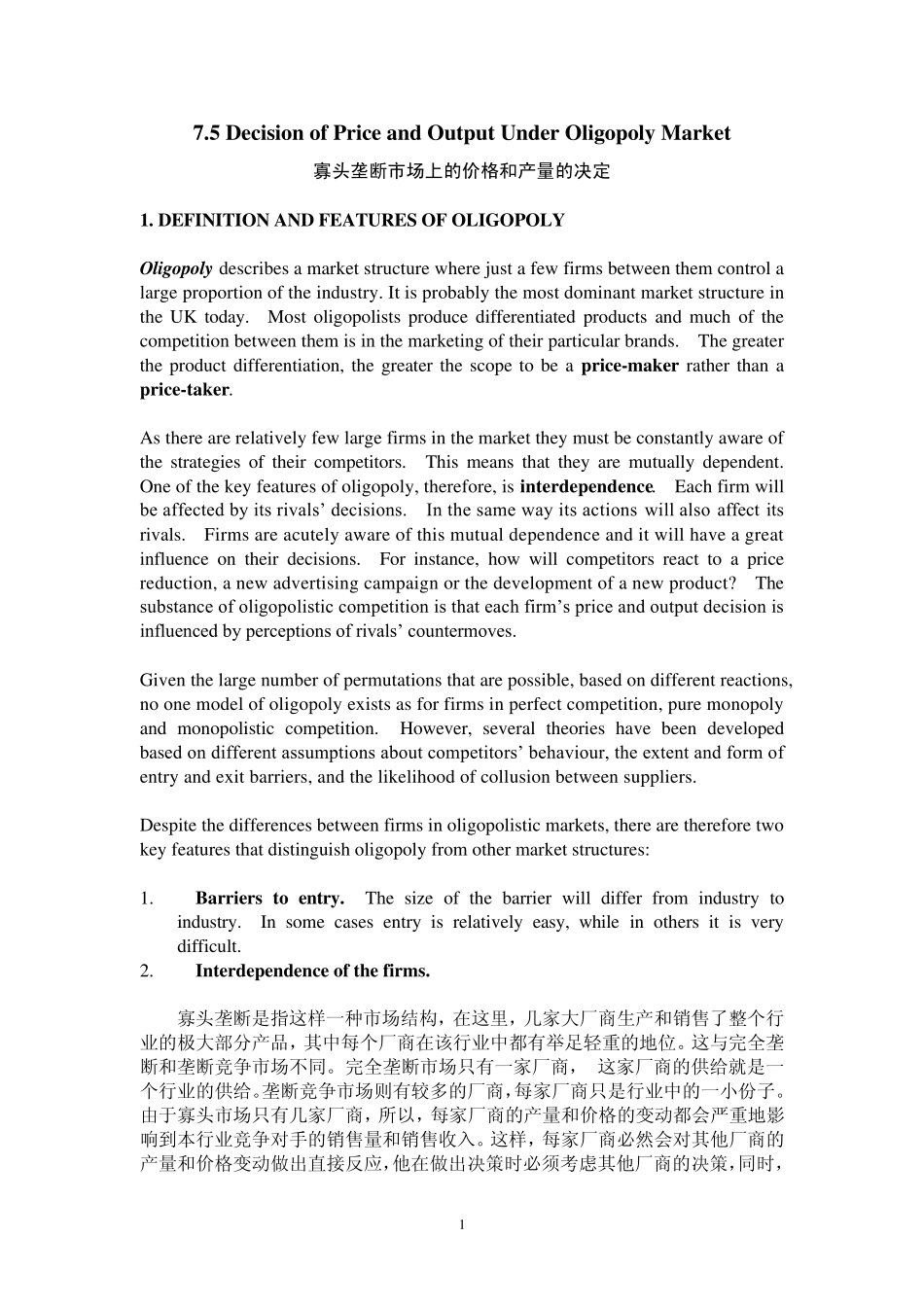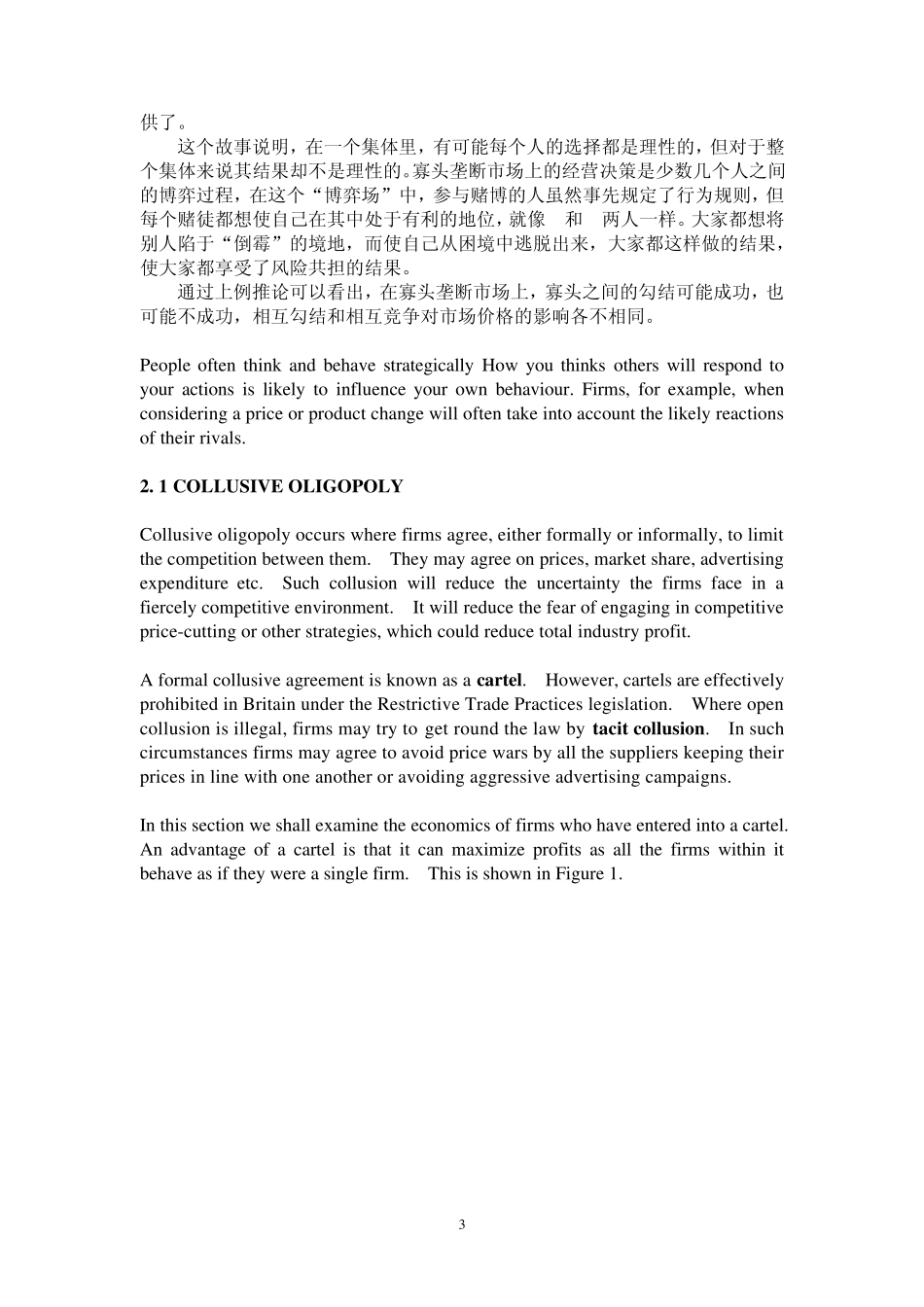1 7.5 Decision of Price and Output Under Oligopoly Market 寡头垄断市场上的价格和产量的决定 1. DEFINITION AND FEATURES OF OLIGOPOLY Oligopoly describes a market structure where just a few firms between them control a large proportion of the industry. It is probably the most dominant market structure in the UK today. Most oligopolists produce differentiated products and much of the competition between them is in the marketing of their particular brands. The greater the product differentiation, the greater the scope to be a price-maker rather than a price-taker. As there are relatively few large firms in the market they must be constantly aware of the strategies of their competitors. This means that they are mutually dependent. One of the key features of oligopoly, therefore, is interdependence. Each firm will be affected by its rivals’ decisions. In the same way its actions will also affect its rivals. Firms are acutely aware of this mutual dependence and it will have a great influence on their decisions. For instance, how will competitors react to a price reduction, a new advertising campaign or the development of a new product? The substance of oligopolistic competition is that each firm’s price and output decision is influenced by perceptions of rivals’ countermoves. Given the large number of permutations that are possible, based on different reactions, no one model of oligopoly exists as for firms in perfect competition, pure monopoly and monopolistic competition. However, several theories have been developed based on different assumptions about competitors’ behaviour, the extent and form of entry and exit barriers, and the likelihood of collusion between suppliers. Despite the differences between...


